Shih-Chieh Hsu
University of Washington
Building Machine Learning Challenges for Anomaly Detection in Science
Mar 03, 2025Abstract:Scientific discoveries are often made by finding a pattern or object that was not predicted by the known rules of science. Oftentimes, these anomalous events or objects that do not conform to the norms are an indication that the rules of science governing the data are incomplete, and something new needs to be present to explain these unexpected outliers. The challenge of finding anomalies can be confounding since it requires codifying a complete knowledge of the known scientific behaviors and then projecting these known behaviors on the data to look for deviations. When utilizing machine learning, this presents a particular challenge since we require that the model not only understands scientific data perfectly but also recognizes when the data is inconsistent and out of the scope of its trained behavior. In this paper, we present three datasets aimed at developing machine learning-based anomaly detection for disparate scientific domains covering astrophysics, genomics, and polar science. We present the different datasets along with a scheme to make machine learning challenges around the three datasets findable, accessible, interoperable, and reusable (FAIR). Furthermore, we present an approach that generalizes to future machine learning challenges, enabling the possibility of large, more compute-intensive challenges that can ultimately lead to scientific discovery.
CaloChallenge 2022: A Community Challenge for Fast Calorimeter Simulation
Oct 28, 2024
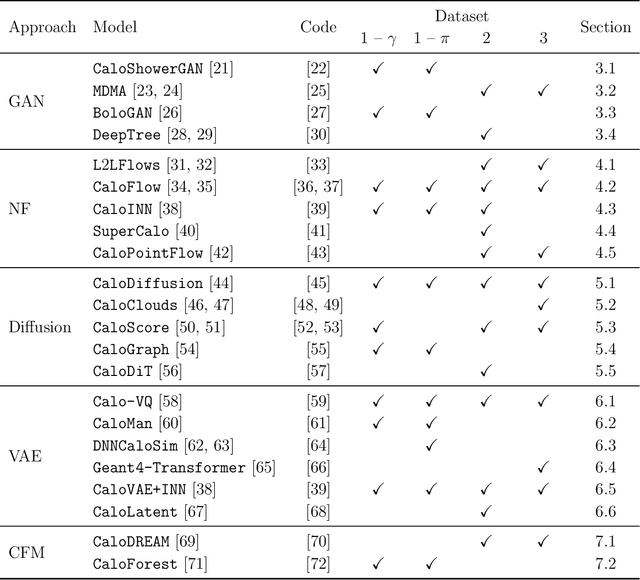
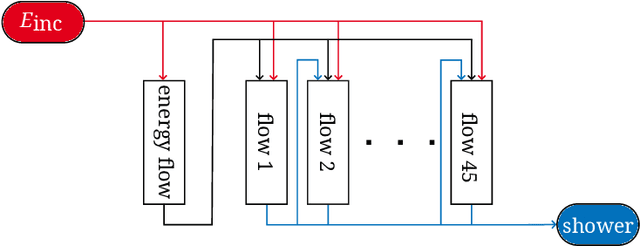
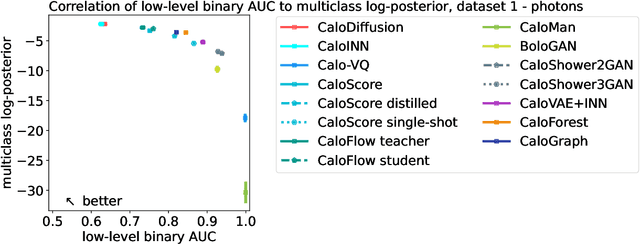
Abstract:We present the results of the "Fast Calorimeter Simulation Challenge 2022" - the CaloChallenge. We study state-of-the-art generative models on four calorimeter shower datasets of increasing dimensionality, ranging from a few hundred voxels to a few tens of thousand voxels. The 31 individual submissions span a wide range of current popular generative architectures, including Variational AutoEncoders (VAEs), Generative Adversarial Networks (GANs), Normalizing Flows, Diffusion models, and models based on Conditional Flow Matching. We compare all submissions in terms of quality of generated calorimeter showers, as well as shower generation time and model size. To assess the quality we use a broad range of different metrics including differences in 1-dimensional histograms of observables, KPD/FPD scores, AUCs of binary classifiers, and the log-posterior of a multiclass classifier. The results of the CaloChallenge provide the most complete and comprehensive survey of cutting-edge approaches to calorimeter fast simulation to date. In addition, our work provides a uniquely detailed perspective on the important problem of how to evaluate generative models. As such, the results presented here should be applicable for other domains that use generative AI and require fast and faithful generation of samples in a large phase space.
FAIR Universe HiggsML Uncertainty Challenge Competition
Oct 03, 2024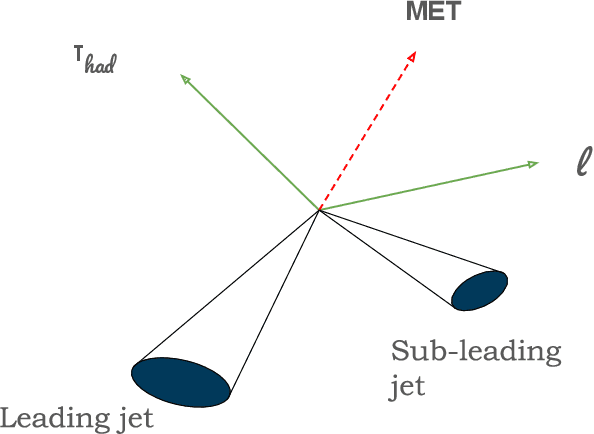
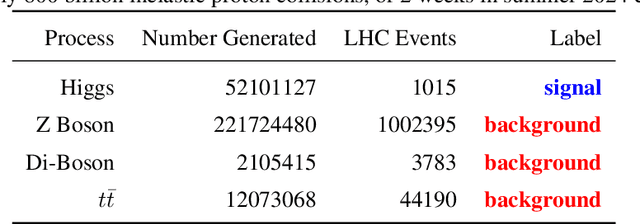
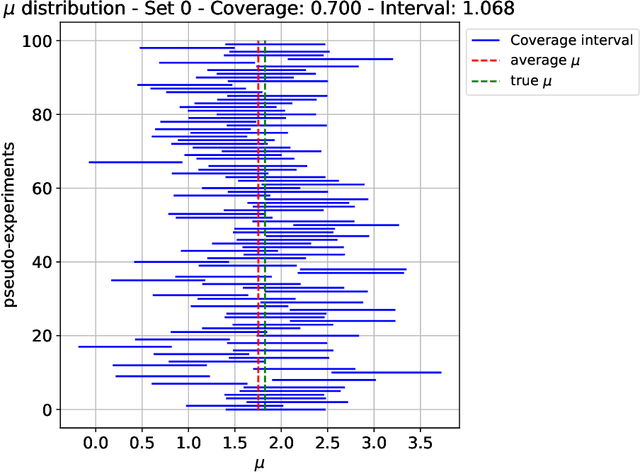
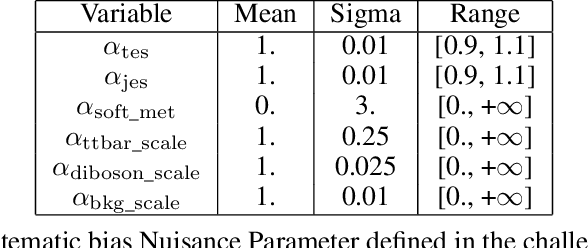
Abstract:The FAIR Universe -- HiggsML Uncertainty Challenge focuses on measuring the physics properties of elementary particles with imperfect simulators due to differences in modelling systematic errors. Additionally, the challenge is leveraging a large-compute-scale AI platform for sharing datasets, training models, and hosting machine learning competitions. Our challenge brings together the physics and machine learning communities to advance our understanding and methodologies in handling systematic (epistemic) uncertainties within AI techniques.
Low Latency Transformer Inference on FPGAs for Physics Applications with hls4ml
Sep 08, 2024



Abstract:This study presents an efficient implementation of transformer architectures in Field-Programmable Gate Arrays(FPGAs) using hls4ml. We demonstrate the strategy for implementing the multi-head attention, softmax, and normalization layer and evaluate three distinct models. Their deployment on VU13P FPGA chip achieved latency less than 2us, demonstrating the potential for real-time applications. HLS4ML compatibility with any TensorFlow-built transformer model further enhances the scalability and applicability of this work. Index Terms: FPGAs, machine learning, transformers, high energy physics, LIGO
Calo-VQ: Vector-Quantized Two-Stage Generative Model in Calorimeter Simulation
May 10, 2024Abstract:We introduce a novel machine learning method developed for the fast simulation of calorimeter detector response, adapting vector-quantized variational autoencoder (VQ-VAE). Our model adopts a two-stage generation strategy: initially compressing geometry-aware calorimeter data into a discrete latent space, followed by the application of a sequence model to learn and generate the latent tokens. Extensive experimentation on the Calo-challenge dataset underscores the efficiency of our approach, showcasing a remarkable improvement in the generation speed compared with conventional method by a factor of 2000. Remarkably, our model achieves the generation of calorimeter showers within milliseconds. Furthermore, comprehensive quantitative evaluations across various metrics are performed to validate physics performance of generation.
FPGA Deployment of LFADS for Real-time Neuroscience Experiments
Feb 02, 2024
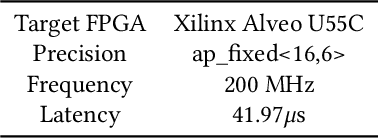
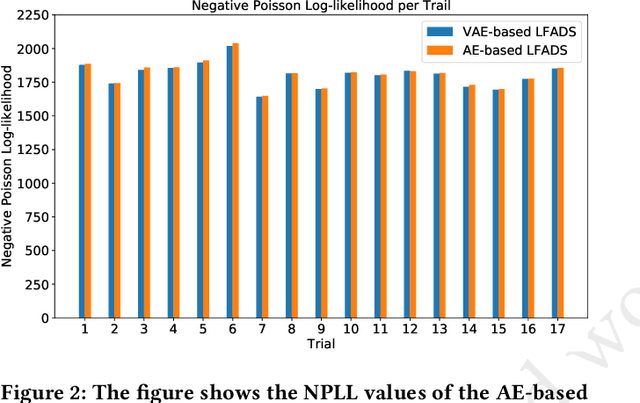
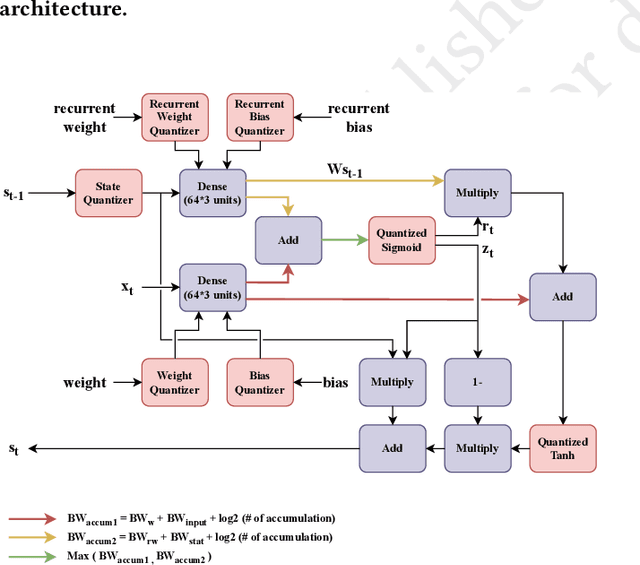
Abstract:Large-scale recordings of neural activity are providing new opportunities to study neural population dynamics. A powerful method for analyzing such high-dimensional measurements is to deploy an algorithm to learn the low-dimensional latent dynamics. LFADS (Latent Factor Analysis via Dynamical Systems) is a deep learning method for inferring latent dynamics from high-dimensional neural spiking data recorded simultaneously in single trials. This method has shown a remarkable performance in modeling complex brain signals with an average inference latency in milliseconds. As our capacity of simultaneously recording many neurons is increasing exponentially, it is becoming crucial to build capacity for deploying low-latency inference of the computing algorithms. To improve the real-time processing ability of LFADS, we introduce an efficient implementation of the LFADS models onto Field Programmable Gate Arrays (FPGA). Our implementation shows an inference latency of 41.97 $\mu$s for processing the data in a single trial on a Xilinx U55C.
* 6 pages, 8 figures
Ultra Fast Transformers on FPGAs for Particle Physics Experiments
Feb 01, 2024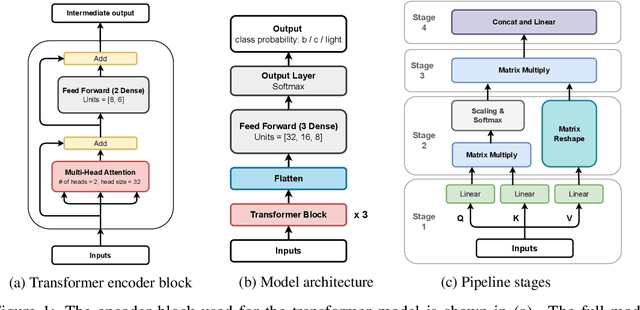

Abstract:This work introduces a highly efficient implementation of the transformer architecture on a Field-Programmable Gate Array (FPGA) by using the \texttt{hls4ml} tool. Given the demonstrated effectiveness of transformer models in addressing a wide range of problems, their application in experimental triggers within particle physics becomes a subject of significant interest. In this work, we have implemented critical components of a transformer model, such as multi-head attention and softmax layers. To evaluate the effectiveness of our implementation, we have focused on a particle physics jet flavor tagging problem, employing a public dataset. We recorded latency under 2 $\mu$s on the Xilinx UltraScale+ FPGA, which is compatible with hardware trigger requirements at the CERN Large Hadron Collider experiments.
* 6 pages, 2 figures
Extended Symmetry Preserving Attention Networks for LHC Analysis
Sep 05, 2023Abstract:Reconstructing unstable heavy particles requires sophisticated techniques to sift through the large number of possible permutations for assignment of detector objects to partons. An approach based on a generalized attention mechanism, symmetry preserving attention networks (SPANet), has been previously applied to top quark pair decays at the Large Hadron Collider, which produce six hadronic jets. Here we extend the SPANet architecture to consider multiple input streams, such as leptons, as well as global event features, such as the missing transverse momentum. In addition, we provide regression and classification outputs to supplement the parton assignment. We explore the performance of the extended capability of SPANet in the context of semi-leptonic decays of top quark pairs as well as top quark pairs produced in association with a Higgs boson. We find significant improvements in the power of three representative studies: search for ttH, measurement of the top quark mass and a search for a heavy Z' decaying to top quark pairs. We present ablation studies to provide insight on what the network has learned in each case.
Low Latency Edge Classification GNN for Particle Trajectory Tracking on FPGAs
Jun 27, 2023Abstract:In-time particle trajectory reconstruction in the Large Hadron Collider is challenging due to the high collision rate and numerous particle hits. Using GNN (Graph Neural Network) on FPGA has enabled superior accuracy with flexible trajectory classification. However, existing GNN architectures have inefficient resource usage and insufficient parallelism for edge classification. This paper introduces a resource-efficient GNN architecture on FPGAs for low latency particle tracking. The modular architecture facilitates design scalability to support large graphs. Leveraging the geometric properties of hit detectors further reduces graph complexity and resource usage. Our results on Xilinx UltraScale+ VU9P demonstrate 1625x and 1574x performance improvement over CPU and GPU respectively.
Data Science and Machine Learning in Education
Jul 19, 2022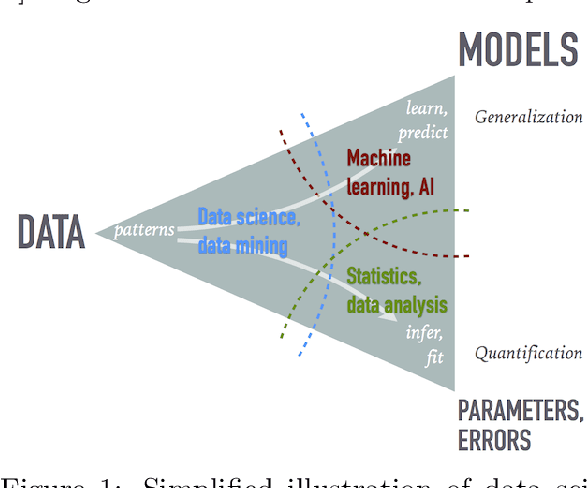
Abstract:The growing role of data science (DS) and machine learning (ML) in high-energy physics (HEP) is well established and pertinent given the complex detectors, large data, sets and sophisticated analyses at the heart of HEP research. Moreover, exploiting symmetries inherent in physics data have inspired physics-informed ML as a vibrant sub-field of computer science research. HEP researchers benefit greatly from materials widely available materials for use in education, training and workforce development. They are also contributing to these materials and providing software to DS/ML-related fields. Increasingly, physics departments are offering courses at the intersection of DS, ML and physics, often using curricula developed by HEP researchers and involving open software and data used in HEP. In this white paper, we explore synergies between HEP research and DS/ML education, discuss opportunities and challenges at this intersection, and propose community activities that will be mutually beneficial.
 Add to Chrome
Add to Chrome Add to Firefox
Add to Firefox Add to Edge
Add to Edge